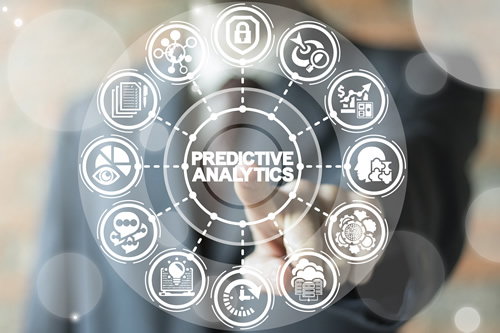High school graduation rates have reached record highs in recent years. Yet, one matter remains clear: there’s still a lot of work to be done. More than 1.2 million students drop out each year and the graduation-rate gap between low-income students and non-low-income students reaches double digits in nearly every state. We face an unfortunate reality where students of color, with disabilities, and in lower socioeconomic brackets have fewer resources and opportunities.
How can teachers, parents, and nonprofit organizations in the education sector work together to close the graduation gap? And how do we create more opportunities for all of our youth? The answer: data, technology, and compassion.
Related content: Can analytics help schools hire the best teachers?
The power of data-driven predictions
Traditionally, the education sector and student-focused nonprofits providing services like afterschool and mentoring programs, have relied on test scores and assessments to gauge student progress. However, these two factors alone can’t reliably show what else might contribute to a student’s academic success. Teachers are responsible for anywhere between 21 and 27 students per class and demand for after-school programs, particularly in low-income areas, has been rising since 2004.
There are not enough hours in the day or resources available to help with growing demand for more student attention and in-depth assessment. This is where technology comes into play. Predictive analytics, which uses historical data sets to identify patterns and predict future outcomes, can fill in the gaps teachers may have missed and that test scores overlook.
For example, John is a 5th grade student in Texas who scored poorly on the annual STAAR exam. If we look at his score in a silo, we inevitably miss crucial details. For instance, let’s say John is in an after-school tutoring program and his attendance records show he’s missed an average of two sessions per week in the months leading up to the exam. Maybe he has also used more free student lunches than before.
These additional data points indicate that something may be going on in his home life to contribute to a below-average test score. Technology with predictive capabilities transforms these details into actionable data, enabling teachers, tutors, and nonprofit service providers to proactively act on red flags and make data-driven decisions about how to provide support.
Technology + humans = the best of both worlds
Technology has the power to gather, analyze, and report data about each individual student, instead of only looking at the student body as a whole. However, technology by itself isn’t enough to reduce dropout rates and effectively steward our youth toward success.
While predictive technology performs analysis and provides insights at a speed and accuracy that only a computer can achieve, there is no replacement for human experience, intuition, and compassion. Teachers and education-focused nonprofits interact and build relationships with students. They understand the nuances of their classrooms, programs, and the education system as a whole. When teachers and case workers have access to data that supplements their interpersonal knowledge, they can guide students towards greater possibilities. Ultimately, these insights can drive informed, data-driven choices for educators and case workers both in and out of the classroom.
Transforming traditional education
As district budgets shrink, decision-makers must be strategic about where they allocate funds. Lack of budget, time constraints, and fear of the unknown can often put technology adoption on the backburner for both educators and case workers. However, as our world becomes increasingly reliant on data to drive decisions, we must consider what we might miss by failing to adopt technology that can provide a more holistic view of students.
Predictive analytics combined with human intervention can transform the way teachers teach and students learn. And it’s already influencing the way nonprofits run their education programs and steward their students toward successful futures. Alone, neither of these capabilities are enough to make a significant dent in school dropout rates. But together, they propel students toward success and empower everyone from educators, policymakers, and case workers to make informed decisions that are rooted in fact and supported by experience and empathy.
If our goals are to keep kids in school, help them graduate, and promote their academic and personal achievement beyond the classroom, then we should look at how predictive analytics can guide us in guiding them. By empowering passionate teachers and case workers with technology, we can create a 360-degree support system for each student. In doing so, we can close the graduation gap and promote opportunity across every student body, keeping more and more kids in school each year.
- How school leaders can manage and control emotions - May 10, 2024
- A purposeful approach to tech integration - May 9, 2024
- How school leaders can foster a culturally responsive framework - May 9, 2024

